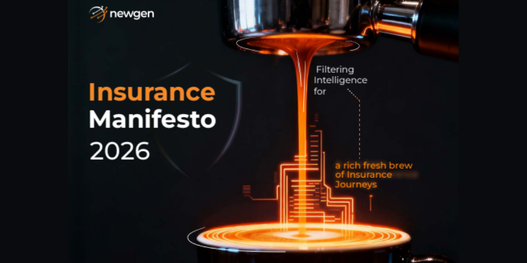Banks today are under simultaneous fire from three directions: regulators demanding greater transparency, fintechs taking away market share by offering better customer expectations, and shareholders pressing for growth with lower risk while optimizing costs. In this environment, loan origination is no longer just a process but a strategic battleground.
At the center of this battleground is the loan origination system (LOS). It is not simply workflow software. It is the control tower where credit policies, risk frameworks, customer journeys, and compliance obligations converge. A weak LOS slows growth and exposes the institution to compliance lapses. A strong LOS becomes a differentiator, turning credit into a faster, safer, more customer-centric product.
Features define the capability of an LOS. Benefits prove its impact on the balance sheet, compliance posture, and customer trust. Evaluating both is essential because banks that rely on outdated platforms risk falling behind competitors that treat LOS as a growth engine rather than a cost center.
What is a Loan Origination Software (LOS)?
A loan origination software (LOS) is the digital lending platform that manages the complete lending lifecycle, from capturing a customer’s application to verifying documents, assessing risk, approving credit, and disbursing funds.
Unlike legacy tools that only digitized forms, modern LOS software integrates with credit bureaus, payroll systems, KYC/AML platforms, and even alternative data sources. It enforces governance, reduces manual errors, and ensures that every loan is processed faster, safer, and with a clear audit trail.
For banks, the LOS is the infrastructure of competitiveness, enabling faster approvals, better risk control, and borrower experiences that rival fintechs.
Traditional vs. Modern LOS: A Comparative Lens
Not all loan origination systems are equal. Many banks still rely on legacy platforms built for an earlier era, when lending volumes were predictable, customer expectations were lower, and compliance checks were straightforward. Those systems digitized forms and automated a few steps, but they were never designed to manage today’s complexity.
Modern LOS platforms, in contrast, are built as strategic infrastructures. They don’t just move applications faster; they enforce governance, integrate real-time data, and adapt as regulations shift. The difference is not incremental; it is structural.
| Aspect | Traditional LOS | Modern LOS |
|---|---|---|
| Decisioning | Static rules and scorecards | Rules + explainable models, policy guardrails |
| Integration | Custom-coded connections, siloed data | API-first, seamless integration with bureaus, KYC, e-sign |
| Compliance | Manual checks, auditor dependency | Automated compliance workflows, audit-ready trails |
| Customer Experience | Branch-heavy, slow processing | Omnichannel onboarding, paperless, instant updates |
| Scalability | Limited by infrastructure | Cloud-first, elastic scaling, regional compliance |
| Adaptability | Hard-coded changes, long IT cycles | Low-code configurability, faster product launches |
Banks that persist with traditional LOS platforms risk being constrained by their own infrastructure. Modern LOS software not only accelerates lending, but it also ensures that every loan is faster, safer, and explainable. That is the baseline for competitiveness in digital banking.
Core Features of an AI-driven Loan Origination Software
A strong LOS is not measured by how many tasks it digitizes but by how well it aligns speed, governance, and customer experience. The following features define a modern LOS software:
- Omnichannel Onboarding
Borrowers no longer follow a single path. They might start an application in-branch, upload documents through a mobile app, and finalize terms online. A modern LOS ensures consistency across these touchpoints, keeping data synchronized and preventing drop-offs. - Automated Document Management
Loan origination is document-heavy, requiring key information such as income proofs, ID verification, and collateral records. Intelligent document processing (IDP) built into the LOS captures, classifies, and extracts data automatically. This eliminates manual errors and accelerates compliance checks. - LOS Workflow Automation
Lending involves dozens of checkpoints, eligibility, verifications, approvals, maker-checker reviews. LOS workflow automation orchestrates these tasks end-to-end with SLAs, escalations, and audit trails. This reduces turnaround time while ensuring accountability. - Credit Decisioning Engine
Traditional scorecards alone are insufficient. Modern LOS platforms combine rules, scorecards, and explainable models into a unified credit decisioning engine. This enables faster, more consistent approvals while ensuring every decision can be justified to auditors. - Seamless Integrations
No LOS operates in isolation. It must integrate smoothly with credit bureaus, KYC/AML platforms, e-signature tools, payroll systems, and core banking. Open APIs and pre-built connectors ensure data moves seamlessly without duplication or delays. - Cloud-first Scalability
Lending volumes spike during festive seasons, tax deadlines, or new product launches. Cloud-enabled LOS platforms scale elastically, support regional compliance, and deliver updates without straining IT teams. - Fraud and Risk Mitigation
Fraud is increasingly sophisticated. An effective LOS embeds fraud checks, identity verification, device fingerprinting, anomaly detection, blacklist validations, into the origination journey itself. Suspicious cases are flagged early, reducing portfolio risk. - Analytics and Dashboards
Real-time visibility is critical. Dashboards provide insights into application volumes, approval ratios, turnaround times, delinquency flags, and exception trends. These analytics allow banks to refine lending strategy continuously. - Low-code Configurability
Regulatory conditions change faster than IT cycles. Low-code configurability allows business teams to adjust workflows, rules, and templates themselves. This adaptability ensures banks stay compliant and launch new lending products faster.
Benefits of an AI-first Loan Origination System for Banks
Features define what a system can do. Benefits prove whether those features create measurable impact. A modern loan origination system delivers outcomes that go beyond efficiency gains, shaping risk posture, customer trust, and growth capacity.
- Faster Cycle Times
Straight-through processing and automated validations reduce turnaround time (TAT) from days to hours. Retail borrowers receive instant approvals, while corporate loans move through complex checks without bottlenecks. - Consistent and Explainable Credit Decisions
With embedded decisioning engines, every approval or decline is backed by documented rationale. This ensures fairness, eliminates bias, and creates audit trails regulators can trust. - Improved Risk Accuracy
By combining bureau scores, income signals, and alternative datasets, the LOS creates a fuller borrower profile. This reduces false approvals, lowers delinquency rates, and strengthens portfolio quality. - Better Customer Experience
Omnichannel onboarding, paperless document handling, and instant updates make lending journeys frictionless. Borrowers see transparency and speed, which directly improves satisfaction and conversion. - Higher Operational Efficiency
Staff no longer spend time on duplicate data entry or manual compliance checks. Teams focus on exceptions and judgment calls, while the LOS handles repetitive work reliably. - Regulatory Confidence
Compliance is built into the system, not bolted on. From reason codes to adverse action letters, every action is traceable, reducing the risk of penalties or reputational damage. - Elastic Scalability
Cloud-ready LOS platforms scale lending operations without straining infrastructure. Banks can handle seasonal spikes or expand into new product lines without costly delays. - Lower Operational Costs
Automated document processing and reduced rework cut back-office expenses significantly. Efficiency gains translate directly into cost savings. - Reduced Fraud Losses
Embedded fraud detection stops risky applications early, protecting the balance sheet and maintaining customer trust. - Faster Time-to-market
Low-code configurability enables banks to adjust workflows and launch new lending products quickly. This agility ensures they stay ahead of fintech disruptors and regulatory changes.
Real-world Impact: Use Cases of Modern LOS Adoption
The impact of a modern loan origination system becomes clear when you see how it transforms different lending contexts:
Retail Lending
Personal loans thrive on speed. With bureau data and automated document capture flowing directly into the LOS software, approvals can shift from days to hours. Automated checks reduce false declines, while staff focus on exceptions. The result: faster disbursals and higher approval rates without increasing risk.
SME Lending
Small and medium enterprises (SME) often present fragmented financial records. A robust LOS system consolidates cash-flow data from bank feeds, tax filings, and accounting systems into one view. This improves credit accuracy and reduces non-performing exposures, while giving lenders confidence to extend working capital more quickly.
Mortgage and Home Loans
Mortgage processes are notorious for thick files and long underwriting cycles. With omnichannel onboarding and automated income verification, borrowers can upload documents digitally while the LOS validates appraisals and income proofs in real time. Abandonment rates fall, approvals accelerate, and underwriters spend time only on high-value cases.
Auto Finance
Dealer financing requires instant approvals at the point of sale. LOS platforms integrate with vehicle registration databases, insurance portals, and fraud detection systems. This ensures loans are approved quickly and securely, allowing customers to leave the showroom financed without delays.
Embedded Finance & BNPL
For digital-first products like buy now, pay later (BNPL), every decision must be near-instant. A modern LOS conducts sub-second checks, sets dynamic limits, and monitors transactions post-disbursement. Embedded fraud checks ensure security without disrupting customer experience.
These use cases show how a loan origination system adapts across lending types. Whether retail, SME, mortgage, or BNPL, the outcome is the same: faster, safer, and more transparent lending at scale.
Transform Lending with Newgen’s Loan Origination System (LOS)
In the real world, features are only as good as their execution and only meaningful when backed by an AI-driven platform. Newgen’s loan origination system, built on the AI-first low-code platform enables banks to win the market with intelligent execution. The LOS software unifies process, data, and governance into a single backbone, giving banks the speed to grow, the control to stay compliant, and the agility to adapt with confidence.
Here’s how Newgen makes the difference:
- Unified across loan types: Whether retail, SME, mortgage, or commercial, the LOS platform supports all kinds of credit products with configurable workflows.
- Low-code and flexible: Changes in policy, rules, or product design can be handled without full development cycles. This lets business users iterate faster.
- Workflow and queue orchestration: The LOS system supports intelligent queue routing, role-based visibility, filters, and escalation. Loans move from one user or department to another with strict rights control.
- Auto-decisioning capability: When requests meet predefined rules and thresholds, the AI-driven LOS system can auto-approve loans end-to-end; otherwise, it routes for further review.
- Reporting & analytics built in: Dashboards track key KPIs like cycle time, bottlenecks, and workflow load. Reports can be configured without code.
- Interoperability: The LOS platform’s prebuilt connectors exist to credit bureaus, KYC/AML systems, e-sign platforms, and core banking solutions.
- Cloud or on-prem support: Institutions can choose deployment models that suit their regulatory or infrastructure constraints.
Conclusion
The future of lending will be defined by how well banks’ balance speed with responsibility. Loan origination systems are evolving from static process enablers into dynamic control towers, where data, governance, and customer experience converge. In the coming years, the winners will be those institutions that treat LOS not as software, but as the strategic fabric of digital lending.
You might be interested in

15 Dec, 2025
Dynamic Permissioning in Agentic AI Systems: Rethinking Security and Access Control

15 Dec, 2025
AI-powered Auditability: Ensuring Explainability in Autonomous Decision Workflows


